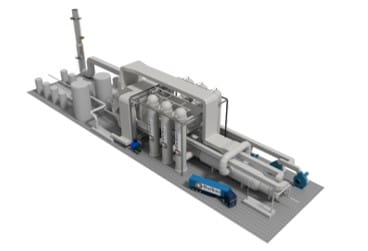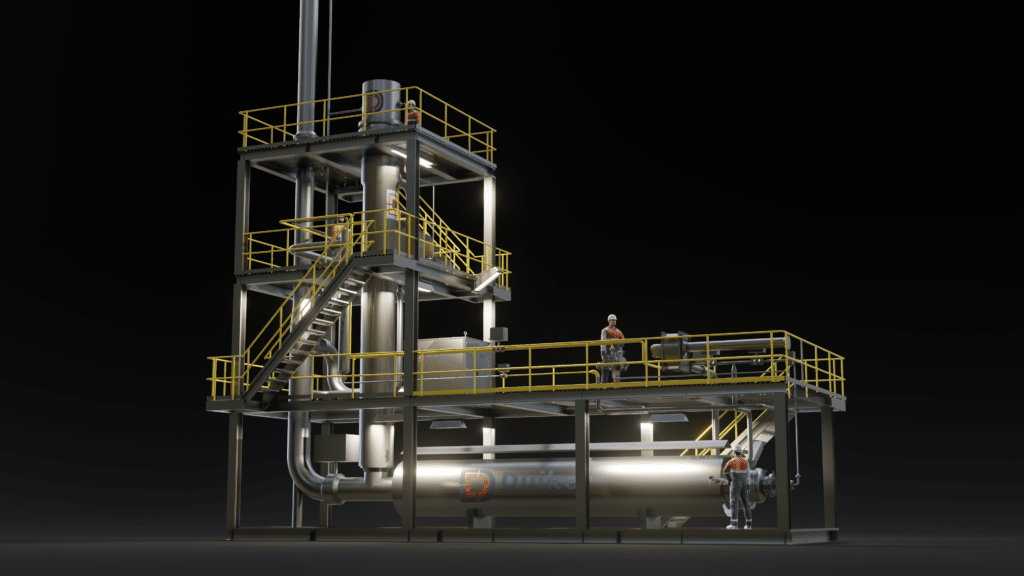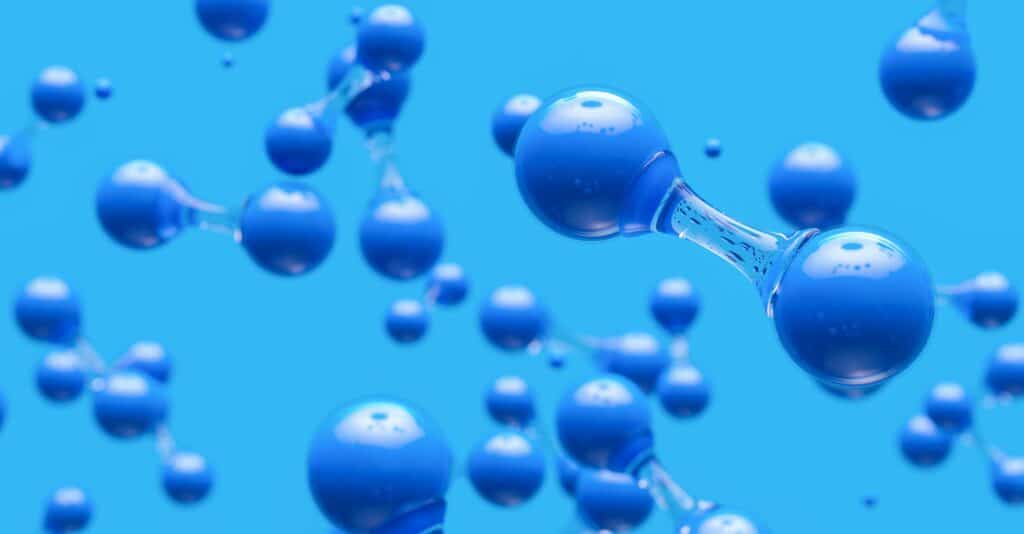Amid the global push for clean energy, ammonia has gained traction as an energy carrier. It enables the import of large sustainable energy volumes. Ammonia cracking has emerged as a practical and promising hydrogen production solution. This process is valued for its technical benefits and its environmental and economic potential. We will explore why ammonia cracking matters and its role in sustainable energy.
Understanding ammonia cracking
Ammonia (NH3) is a compound of nitrogen (N2) and hydrogen (H2). It is a practical hydrogen (H2) carrier due to its easier storage and transport compared to pure hydrogen.
Ammonia cracking breaks down ammonia (NH3) into hydrogen (H2) and nitrogen (N2). This occurs when ammonia is exposed to heat and a catalyst, which speeds up the reaction without being consumed.
Hydrogen (H2) from ammonia cracking powers fuel cells, industrial processes, and other clean energy applications. The byproduct, nitrogen, is harmless and makes up 78% of Earth’s atmosphere. This process produces hydrogen efficiently with no harmful emissions, supporting sustainable energy systems.

> 90%
Highly efficient
ammonia conversion
0 ppm CO2
No scope 1
CO2 emissions
275-350 TPD H2
Single train capacity for performance
5 ppm NOX
Low levels of NOX by proven technology
> 99,97%
Purity to produce
cell grade H2
50 bar (g)
H2 output without
gas compression
Why ammonia cracking is significant
Ammonia cracking helps address key energy challenges: sustainability and energy management. It produces hydrogen with minimal or zero carbon emissions, depending on ammonia production methods. This makes it essential for reducing greenhouse gas emissions and transitioning to cleaner energy.
Hydrogen (H2) is crucial for clean energy but is difficult and costly to store and transport. It requires high-pressure tanks or cryogenic conditions. Ammonia is more stable, denser, and easier to handle with existing infrastructure. Converting ammonia (NH3) to hydrogen (H2) at the point of use simplifies logistics and lowers costs, making it a scalable hydrogen energy solution.
A cleaner path to Hydrogen
Hydrogen (H2) is vital for clean energy, supporting industries, transport, and energy storage. However, traditional hydrogen production releases significant carbon dioxide (CO2) emissions. Ammonia cracking offers a cleaner alternative, especially when using low carbon ammonia.
Green ammonia
Produced using renewable energy sources such as wind, solar, or hydroelectric power, is entirely carbon-neutral. When cracked, green ammonia (NH3) releases hydrogen (H2) with no associated carbon dioxide (CO2) emissions, making it an ideal solution for decarbonized hydrogen production.
Blue ammonia
Made from natural gas, blue ammonia (NH3) incorporates carbon capture and storage to lower CO2 emissions. These approaches make it a key solution for large-scale clean hydrogen production. Produced blue ammonia may act as an additional transition step between fossil fuels and green ammonia production.
Duiker’s ammonia cracking technology
Duiker has over 18 years of low Nitrogen oxides (NOx) ammonia combustion expertise and decades of industrial process knowledge. We developed the most efficient ammonia cracking technology on the market. Our system consists of three key units: the ammonia combustion system (Stoichiometric Controlled Oxidation), an advanced reactor, and a gas separation system. The design prioritizes simplicity, cleanliness, and efficiency.
The proprietary SCO unit has two stages for staged ammonia combustion. Dynamic control ensures proper combustion and minimized Nitrogen oxides (NOx) emissions.
Duiker’s cracking reactor, combined with an advanced ammonia cracking catalyst, efficiently uses heat, generated by the SCO to crack ammonia into hydrogen at high pressure and temperature. The reactor ensures near-complete ammonia conversion.
The gas separation system, a pressure swing adsorption (PSA) unit, removes impurities and produces high-purity hydrogen. PSA ensures hydrogen (H2) is available at high pressure without recompression.

The benefits of ammonia cracking: Simple, clean & efficient
Simple
Duiker’s ammonia cracker has only three key unit operations, ensuring simplicity. The streamlined design makes it easy to operate, compact, and highly reliable. It outperforms complex systems that require ammonia washes and intricate heat management.
Clean
With decades of ammonia combustion expertise, Duiker’s ammonia cracker has zero carbon dioxide (CO2) and ammonia (NH3) emissions and achieves ultra-low Nitrogen oxides (NOx) emissions. It sets a new benchmark for environmental cleanliness. Uniquely, this process does not require water, nor produces waste streams.
Efficient
Our high-pressure operation and advanced heat integration make Duiker’s way to crack ammonia the most efficient. The design reduces fuel and electricity consumption, maximizing efficiency.
Seizing the Opportunity
Ammonia cracking is more than a technical solution; it is a strategic tool for energy sustainability. Industries adopting this technology advance decarbonization while remaining competitive in a changing market.
As a market leader in ammonia cracking, we believe now is the time to unlock its potential. Collaborating with researchers, policymakers, and industry leaders, we aim to make it a cornerstone of the global energy transition.
Interested in how ammonia cracking can fit your operations? Contact us to explore the possibilities together.





